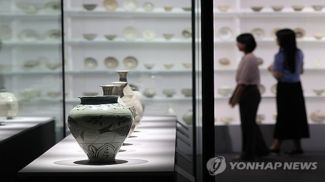BEIJING, 10 October (BelTA - China Daily). - At the Niya ruins site in the Xinjiang Uygur autonomous region, an antique brocade armband, with embroidered characters roughly translating to "five stars rise in the east and benefit China", left many with room for imagination.
For the crew of dance drama Eastern Immortal Prophecy, the artifact from the Han Dynasty (206 BC-AD 220) contains an epic about the empire, a northern nomadic tribe and the kingdom of Jingjue, which is what Niya used to be. The story tells of a border-defending commander who captures a tribal chief's son, yet the two get lost in the desert and end up in Jingjue, where the pair, and the princess of the kingdom, develop a friendship.
At the recent 13th China Art Festival, the dance drama was given the Wenhua Grand Prize, a top accolade for the performing arts in the country.
Director Wang Ge says this is the most difficult production he has worked on, because the subject matter required imagination, and the historical background meant their creation would need to be attested by records.
"The Niya ruins site has such a long history, and we could only find limited historical material for reference, but a dance drama needs a lot of supporting details," Wang says.
The creation of the dance drama started in February 2020. By June that year, the crew went on trips to Xinjiang's Urumqi and Hotan cities to gather inspiration from the ancient site and about the artifacts.
A wooden slip found at the site reads, "Feng greets Chunjun by presenting this jade ornament. Let's not forget about each other." From the artifact, scriptwriter of the production Xu Rui came up with the characters for Feng and Chunjun, respectively the commander and princess, and hence weaved this story about unity among ethnic groups.
The crew revised 12 drafts before deciding on a final script that adopts a humorous and lighthearted storyline to portray the seemingly irreconcilable differences of the protagonists.
"This grand narrative seemed heavy to present, so we decided to use a comedic way in the plot, so as to make the production more acceptable for the general audience, and bridge the gap between history and today," Wang says.
Gulmira Mamat, an associate professor at Minzu University of China, plays the role of Chunjun. Although she is an experienced dancer, she specializes in solo dance, and this is the first dance drama she has participated in.
"Performing in a dance drama is a test of a dancer's comprehensive abilities. In addition to professional dancing skills, we need to be able to portray a character, express the emotions and tell a story," she says.
Although she is different from the story's teenage girl Chunjun, Gulmira Mamat says she has enjoyed playing the character, whose zesty and whimsical nature made the performing experience liberating.
"We are telling a story that is based in my hometown, but more than 2,000 years ago. I feel that I've traveled in time to a fairy-tale world, and taken the other two protagonists on a trip around beautiful Xinjiang," she says.
"By performing in the dance, I have once again gotten to know the charms of Xinjiang's culture. I'm very honored to work with an excellent team, and grateful for my hometown, nourishing me with its songs, dances and diverse culture, and allowing me to have my own unique performing style."
The dance drama premiered in Beijing in June 2021, and toured China, delivering more than 30 performances in just over a year. Apart from the national tour, several seminars centered on the production were hosted, where experts gave their opinions and suggestions, based on which the team continued to modify the production.
Wang Yichuan, vice-chairman of China Literature and Art Critics Association, said at a seminar that the dance drama is marked by its integration of performing arts and archaeology, using dance to envision the stories behind cultural relics.
"This production can provide valuable inspiration for artistic creation. China has many historical artifacts, just like this brocade piece, waiting to exercise the imagination of artists of different genres, and to inject life into these treasures in a contemporary context," Wang Yichuan says.













